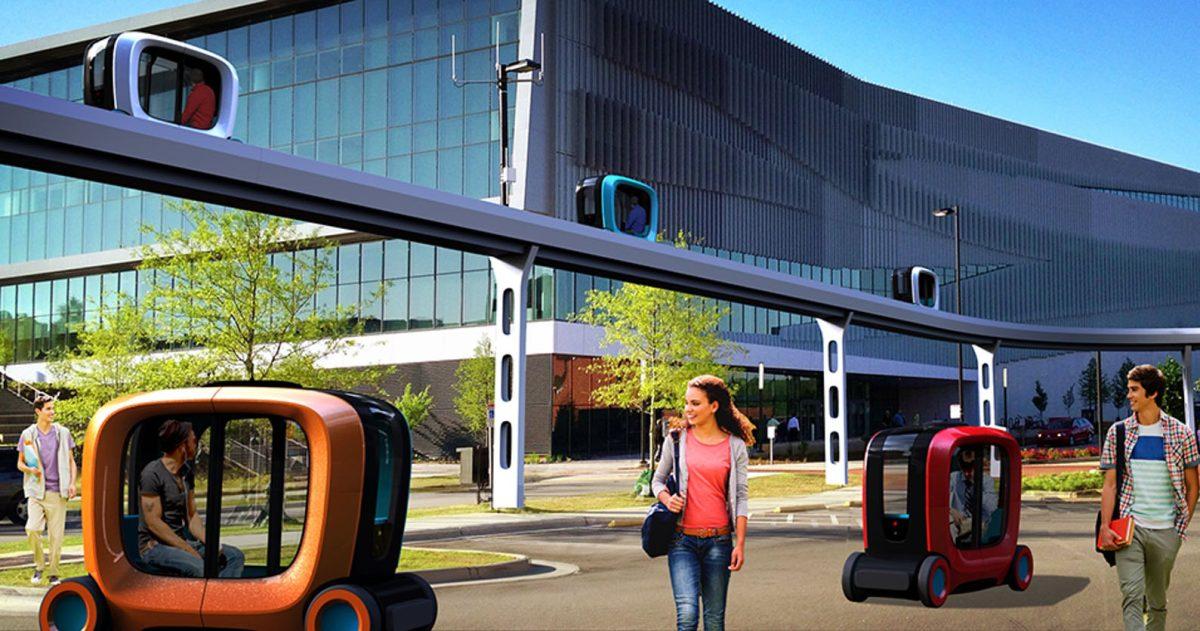Ever wonder what riding down Hillsborough Street in a light rail car similar to what George Jetson rode to work in would be like? Well, in the future this may be a reality.
Marshall Brain and Seth Hollar of the NC State engineering department have developed construction plans for an elevated rail system called EcoPRT, some of which would go through NC State’s campus.
Interestingly enough, the idea of a rail system going through NC State is not a novel one.
“NC State has a corridor from the Hunt Library to the Hill Library that’s been on the master plan for 20 years and is labeled as a ‘monorail system,’” Brain said.
However, EcoPRT is not going to be a standard monorail system. Rather, EcoPRT is a high-efficiency “entrepreneurial transit system” that Brain said will be relatively simple to install with little ground-level construction that would impact NC State’s campus.
Brain described construction as “Putting holes in the ground every 50 or 100 feet to put the equivalent of a phone pole in, and then the track just gets hung on those poles with a crane.”
Brain and Hollar have also spoken with shopping developments such as Cameron Village and the city of Cary about extending EcoPRT.
“If we put a system into NC State, maybe Cameron Village wants access to 30,000 students, so they can build a spur [of EcoPRT],” Hollar said.
As far as construction costs are concerned, EcoPRT will be relatively inexpensive, according to Brain.
“We are trying to create track that costs $1 million per mile and bring vehicle cost down to around $10,000,” Brain said.
According to Brain, this is an extremely low cost considering that track for typical subway or light rail systems cost anywhere from $70 million to more than $100 million.
Funding for EcoPRT will depend on who is building the track and where it goes. NC State would probably use its traditional payment scheme, such as student fees, to cover the cost, according to Hollar.
However, other branches of EcoPRT may be funded differently. If Cameron Village were to build a spur of EcoPRT, it would get paid through fares, profits or revenue generated instead, Hollar said.
If other developments charged a fare for riding the EcoPRT, it would still be relatively inexpensive.
“We would like to charge a fare on the order of 50 cents per mile,” Brain said.
This price point was reached due to the 56 cents per mile that is generally reimbursed to employees for driving for work purposes.
“We’re trying to stay right in that zone of what it costs to drive a car,” Brain said.
But EcoPRT isn’t just an idea; the project is coming along at a relatively fast pace.
“Our goal is to have the [prototype vehicle] drive around Centennial Campus by the end of the semester,” said electrical engineering student Michael D’Argenio, referring to the prototype currently under construction.
Students will be able to ride the vehicle, which Brain said will pilot itself to certain stops including the library and Engineering Buildings I, II and III.
“We hope that we will be able to bring [this vehicle] out and run it on the sidewalk without building any track,” Brain said.
However, Hollar said EcoPRT won’t simply be a way to get from point A to point B.
“We all grew up thinking that we’re going to be driving a car for the rest of our life, but in reality there are a number of different options out there,” Hollar said.
Brain and Hollar said they are are looking for more students to get involved with EcoPRT. A public meeting about EcoPRT will be held on Tuesday, Sept. 30 at 7 p.m. in the Hunt Library auditorium (room 1103). More information can be found on www.ecoprt.com.





